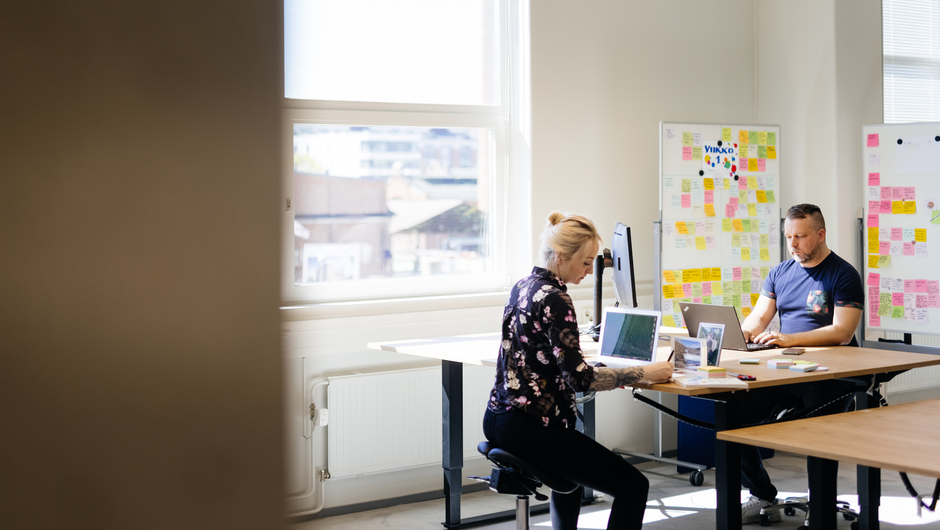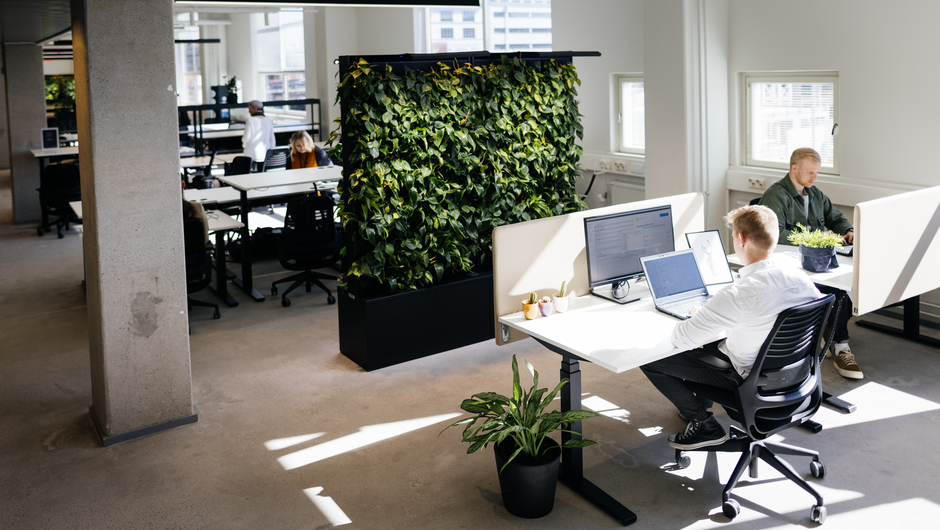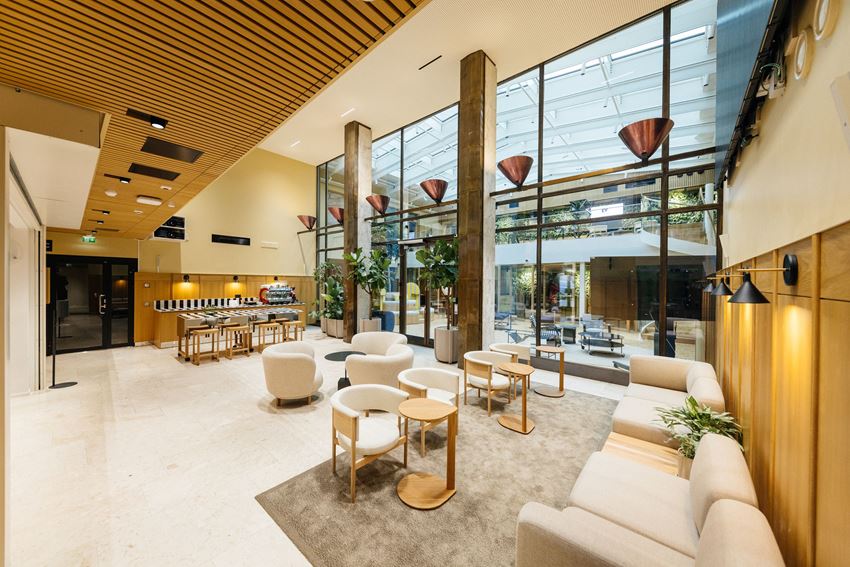Sustainable data centers as a service
- Work
- Offices
- Future of Work
- 1/10/2022
More freedom, responsibility and caring – how has COVID-19 changed knowledge work and the way it is managed?
Not long ago, all of the employees coming to the office in the morning was how a normal day began. That “old normal” no longer exists. According to YIT’s Ilkka Tomperi, even hybrid work may turn out to be only an intermediate phase in a trend that leads to the complete liberation of knowledge work. This will have a significant impact on management and leadership practices.

The COVID-19 pandemic has made the home office a familiar environment for everyone whose work is not location-dependent. After an ascetic beginning, many people have started to enjoy remote work more and more.
“Many companies have found that job satisfaction and productivity have even improved during the pandemic and sickness-related absences have decreased on average. In the past, some supervisors may have believed that an employee’s physical presence is directly linked to the progress of their work. Now, they have realised that physical presence is not that important after all,” says Ilkka Tomperi, Executive Vice President of YIT’s new Property Development segment.
Employees who work remotely can usually manage their working day more independently. Even supervisors who are fond of micromanaging have been forced to give more freedom to their subordinates. This has given the employees space to grow and take on more responsibility.
The old normal will not return
According to Tomperi, the “old normal” where all of the employees come to the office at nine in the morning no longer exists. We have transitioned to hybrid work, which means performing the work where it is best performed. For some tasks and situations, that place may be the office. Other tasks may be better performed at home, in a co-working space or at the library.

Hybrid work is largely about freedom of choice – employees are increasingly able to choose their working environment. This has a significant impact on management and leadership.
“In fact, hybrid work is only an intermediate phase in a trend that leads to the complete liberation of work. The transformation accelerates the fragmentation of work, and employment relationships may also become more flexible. A growing number of knowledge workers are likely to work in consulting roles in the future. There will be more degrees of freedom than there are now, also in the geographical sense. This trend will present new challenges for management,” Tomperi explains.
Well-being is emphasised in the management of hybrid work
In 2021, YIT partnered with The NextGen Project and Microsoft to compile a report called Leading hybrid work: Five lessons for executives, which was supplemented with the perspectives of business experts and next-generation leaders. The themes highlighted in the report include the growing significance of well-being, utilising humanity and open-mindedness in leadership, team-specific hybrid work strategy and active communication with subordinates. Tomperi underscores the importance of well-being in particular.
“Responsibility for people’s well-being must be consistently given the first priority in the organisation’s decision-making to ensure that all employees feel valued and cared for. This may be more difficult to achieve in remote work because you do not get to physically see the condition of your subordinate or colleague. In the home office setting, the most conscientious employees may work too hard and get burned out. This presents a challenge to leadership – how to make sure your team stays in good shape,” Tomperi says.
Improving the employee experience in the office setting
Ordering employees to return to the office is not the solution for improving well-being.
“In hybrid work, the office needs to be a social magnet. It needs to be attractive for people to genuinely want to spend time there. This is an opportune time for management to consider how to upgrade their business premises, services and technology in order for the premises, operating models and systems to better serve the needs of hybrid workers,” Tomperi notes.
During the past two years of the COVID-19 pandemic, many people have made improvements to their home office. They have invested in better connections, desks, chairs and screens.
“The COVID-19 pandemic has raised the bar for the employee experience at the office: technology and tools must function smoothly, it must be possible to find a quiet place to focus on work, and the lunch experience must be better than at the home office. If the office is a rigid environment full of cubicles or an anemic open space characterised by the absence of services, it is a less attractive workspace than the home office for many employees. The aim should be to make the office better than the home in every respect. When an employee feels good about being able to visit the office, the office can be considered a pull factor.”
Attractive premises are often also very significant for the company's brand towards its own employees as well as customers.
The biggest advantage of an attractive office: encounters
As discussed above, office premises must deliver something extra compared to remote work. The big advantage of the office is its ability to facilitate in-person encounters.
“Spontaneous and sprawling in-person conversations can be very important. By autumn 2021, many people had realised that the few in-person encounters that were possible were almost always happy events that improved team spirit,” Tomperi says.
According to Tomperi, even though the continuous remote work does not seem to have eroded job satisfaction or productivity in companies on average, we can only assess the short-term impacts of remote work.
“To what extent have the practices and habits adopted during the pandemic influenced, for example, employee orientation, building the corporate culture, career development, learning new things, innovation, customer relationships or cooperation between teams? These are areas where the consequences of remote work cannot be seen in a quarter or a year. It will take several years.”
Tomperi believes that management needs to keep a close eye on the weak signals and risks associated with these areas. Organisations need models that drive the corporate culture forward and promote the achievement of goals even in remote and hybrid work.
“Sharing experiences and lessons between teams and across organisational boundaries is important, as it supports adaptation to the changes in working life. This is also why YIT wants to highlight this theme.”
Read more about the future of work



